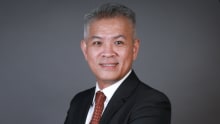2021 should be about reset and restart: N. Venkat Venkatraman

Professor Venkat Venkatraman is the David J. McGrath jr. Professor of Management at Boston University Questrom School of Business. He has previously taught at MIT Sloan School and London Business School. He is the author of The Digital Matrix: New Rules for Business Transformation Through Technology, LifeTree Media (2017). He is one of the most-cited researchers in strategy and digital business and has won prizes for his research. He has consulted and/or lectured all over the world.
Here are the excerpts of the interview.
How do you see the current business scenario and organizations’ bounce-back strategies?
In March 2021, there’s a sense of optimism that the economies will recover although some sectors will find it slower than others. Some find that COVID-19 has been a tailwind—e.g., at-home delivery, online education, and media streaming. Others have felt the headwind of Covid—commercial real estate, conventions, live-sports, gyms, and sports clubs, hospitality, airlines, and so on. Most companies feel that the new normal will not be the old normal as individuals and companies readjust to areas where they feel safe and healthy.
Will the year 2021 see organizations trying to uncover new sources of value and shape a sustainable post-COVID-19 world? What are the keys to reinventing organizations for a sustainable future?
I think 2021 should be about reset and restart first and foremost. Ensure that the business model is robust and stable to withstand minor shifts due to variants or geopolitical shocks about travel and supply chains. Companies must now ensure that the fundamental building blocks are in place to respond quickly and effectively to the inevitable uncertainties. In 2022, companies should be in a better place to plan for the next normal by recognizing the different trajectories of shifts in consumer behavior and business practices.
Ensure that the business model is robust and stable to withstand minor shifts due to variants or geopolitical shocks about travel and supply chains.
Also Read...
- The pandemic has exposed inequities like never before: Bain's Diversity Head
- When leaders Choose To Challenge: International Women's Day 2021
- Interview with AXA Group’s Global CHRO
- Flexible working options can help level the playing field: BCG's Diversity Head
Do you think the toughest leadership test is looming now that businesses are striving hard to rebound from the crisis?
The toughest leadership test is not acknowledging that the new normal will be different from the old. The toughest leadership test is making the employees and customers believe that we are somehow going to go back to the old ways. The toughest leadership test is projecting a sense of calm assured confidence and rally the organization to move forward.
What role will ‘purpose’ will play in the new world of work after the COVID-19 pandemic? What's the role of business leaders to embed purpose into business strategy? How can organizations translate their values into positive action for the sake of the common good?
“Purpose” is becoming more and more central along multiple dimensions as corporations look at a broad set of stakeholders beyond shareowners. Take employees as an example: they do want to work for companies whose purpose aligns with them. And this is where even concern for societal goals (e.g., environment) is now becoming more important than ever before. Then, there is more recognition accorded to social, diversity, inclusion, and equity themes. Pure shareholder maximization will be seen as being narrow-minded by the younger generation of employees and customers.
What does the future of innovation look like according to you?
I think the future of innovation is brighter than ever before. This is because we now have new needs—how best to work from anywhere, learn from anywhere, interact with anywhere, and so on. At the same time, we have shown how we can accelerate healthcare innovation when it comes to the discovery, testing, manufacture, and distribution of vaccines. We are in the early stages with AI and ML, robotics, AR, VR, 3D printing, cloud, autonomous drive, etc. Next five to ten years promise to be the golden age of innovations at the convergence of all these different technologies.
How do you see the new ways of working? How will organizations unlock new ways of working in a post-COVID-19 World? Is the remote mode of work sustainable?
Overall, the nature of work has already changed. Most expected WFH to impact productivity but that has not been as severe. We will go forward with a hybrid model with flexible schedules. F2F meetings will be for collaboration and brainstorming and virtual work will be for focused work. How best to develop organizational culture will be a major challenge. But, I do not think that this is insurmountable. Leaders must simply figure out new ways to foster new ways of creating and evolving organizational culture that recognizes the inevitability of mixed modes of working. Purely remote work for all employees may not be sustainable; it may not even be required but companies should look to develop flexible modes. The best philosophy is to experiment, learn, iterate and adapt.
Leaders must simply figure out new ways to foster new ways of creating and evolving organizational culture that recognizes the inevitability of mixed modes of working.
Can technology help reinvent workforce learning and skilling? What’s your advice for L&D leaders to make virtual learning seamless, engaging, and impactful?
L&D dealers must define the new strategy and approach for learning. Gone are big conferences or participation in University-run programs—at least for the immediate two to three years. Learning must be online and personalized with actionable projects that managers execute in small teams. External coaches help facilitate learning and internal coaches help managers to apply the learnings to the organizational context. Previously L&D leaders selected the programs and were mostly hands-off. Now, they need to be more hands-on and action-learning oriented.
How do you see the role of talent leaders evolve in 2021?
The #1 challenge for the talent leaders is to develop a profile of future skills needed at the intersection of smart humans and powerful machines (read: AI & Machine Learning). Talent leaders should ensure that the company is well-positioned in the talent marketplace. They should develop a comprehensive program focused on recruitment as well as continuous adaptation of the skills needed to win in the future. They recognize that future skills are different from the current set of skills and work systematically to help the talent step out of their comfort zone—e.g., learn new digital skills involving data and analytics, AI, etc.
MORE FOR YOU: 'COVID-19 was unprecedented, so will be the future of work’














